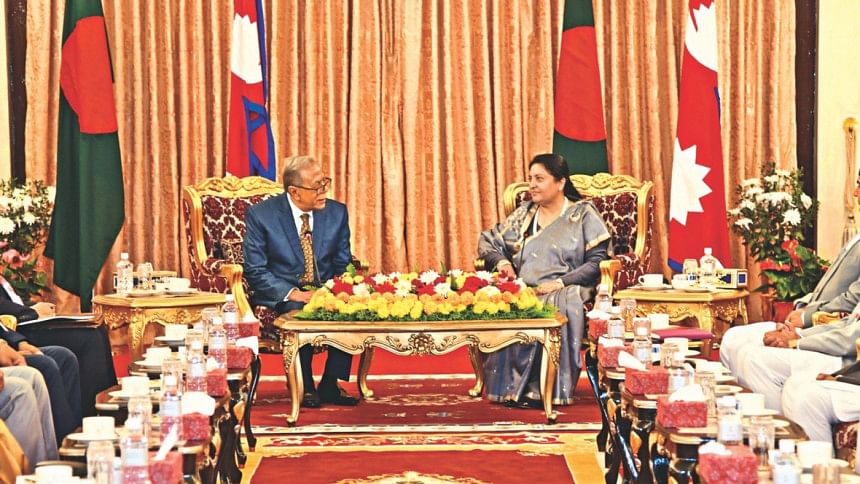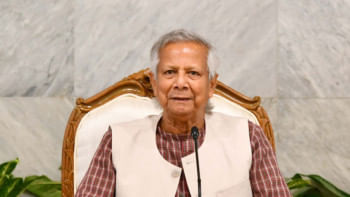Nepal-Bangladesh Relations: Beyond Bilateralism

Nepal was the 7th country in the world to recognise the independence of Bangladesh on January 16, 1972. The two countries established formal diplomatic ties on April 8, 1972. The two countries are also the founding members of the South Asian Association for Regional Cooperation (SAARC) and member of the United Nations, contributing to UN Peace Keeping Missions worldwide and other regional frameworks.
With a great zeal to enhance the bilateral cooperation, Bangladesh opened its full-fledged Embassy in Kathmandu on October 3, 1971, and Nepal opened its Embassy in Dhaka in 1976. From the early days, Nepal and Bangladesh have maintained cordial relations and extended support in regional, multilateral, and sub-regional cooperation. For instance, Nepal and Bangladesh are active members of the Bay of Bengal Initiative for Multi-Sectoral Technical Cooperation (BIMSTEC), and Bangladesh, Bhutan, India, Nepal Initiative (BBIN)- a sub-regional grouping body in the region.
Trade, transit and economic ties
Soon after entering formal diplomatic ties, Nepal and Bangladesh signed a Trade, Transit and Payments Agreements in 1976. The Bangladesh government had also allowed Nepal six transit points for entry and exit for trade purposes through Bangladesh. However, till date, it has not become wholly functional. Bangladesh had offered Nepal the use of the Chittagong and Mongla Port in 1997 after opening the Kakarvitta-Phulbari-Bangabandhu route with additional rail route to Nepal Rohanpur in Bangladesh to Singhabad India, but Nepal is yet to make use of them despite Nepalese traders having shown deep interest.
In 2015, Prime Minister KP Oli announced foreign trade through Bangladeshi ports due to border issues with India. Nepal and Bangladesh had also signed an Agreement for the Avoidance of Double Taxation and Prevention of Fiscal Evasion concerning taxes on income on March 5, 2019. Until 2014, the bilateral trade was in favour of Nepal, but with a fall in the export of lentils from Nepal, an eventual trade deficit was observed. There was an export of NPR 954 million and an import of NPR 5.29 billion in 2019-2020. The two have done well in joint-ventures set up of Nepal-Bangladesh Bank Limited. The IFIC Bank (Bangladesh) has 40.91 percent shares, and it is one of the biggest FDIs from Bangladesh in Nepal. While the progress is slow, the two economies hold the potential to grow cooperation in years to come.
Power and connectivity
With a growing industrial base, Bangladesh has emerged as an energy-hungry nation. Nepal is among the top investment destinations for Bangladesh for the purchase of 9,000 MW electricity by 2040. It has already pledged USD 1 billion for Sunkoshi II Hydroelectricity Power Plant with 1,110 MW capacity and Sunkoshi III with 536 MW capacity. During the Nepal Investment Summit in 2017, PRAN-RFL a leading conglomerate of Bangladesh pledged USD 2.4 billion for the food and infrastructure sectors in Nepal. However, an unstable political scenario in Nepal has kept the investors hesitant.
Bangladesh is awaiting the Bilateral Investment Protection Agreement (BIPPA) with Nepal, which may see an initial investment of USD 3 billion together. It will be the most significant single country investment to help make a trade surplus with Bangladesh through power trade. Nepal could also become a net energy provider to Bangladesh, using the Indian transmission lines for the border trade, which India had already agreed upon. In this regard, Bangladesh has signed an MoU with India to purchase 500 MW electricity at NPR 7.71 per unit for 25 years.
Bangladesh is also keen in developing the waterways terminal in landlocked Nepal, allowing it sea access with the Bay of Bengal in collaboration with the government of Nepal. During the tenure of Bangladeshi Ambassador to Nepal Mashfee Binte Shams, there was significant discussion with the Bangladesh Inland Water Transport Authority (BITWA). Similarly, the leading private waterways terminal operator from Bangladesh, Summit Alliance Ports Limited, has shown interest to develop Terminals in Koshi and Narayani River. The Bangladesh government is also keen on connecting Nepal through their railways connectivity via India till Kakarvitta and Biratnagar for cost-effective trade. Ambassador Mashfee Binte Shams was very much vocal for the timely execution of BIN Motor Vehicle Agreements, but it could not materialise. Also during the tenure of Ambassador Shams, Nepal Bangladesh Business Forum (NBBF), an annual bilateral forum was created in 2016 in collaboration with AIDIA with the sole objective of promoting trade , business and investments in both countries. There is a realisation within the private sectors that BIN could be a game-changing platform for Nepal to access Bangladesh and South East Asia's connectivity through Myanmar, so Nepal has to ratify the agreement as soon as possible.
Other than trade and investment, Nepal and Bangladesh can join hands together with Indian railways and waterways authorities in the trilateral agreements for the rail and waterways development in the sub-region. It will allow better connectivity with the aim of easy, free movement for cost-effective trade. BIN can develop the Hindu and Buddhist circuit for the sub-regional religious tourism as Bangladesh has both Hindus and Buddhists like Nepal and India. Bangladesh is a new "Tiger" in Asia, overlapping the Indian economy due to its growing garments sector in recent years. However, Bangladeshi garment industries are yet to see the potential in Nepal as a market. Nepal should think of setting up Bangladeshi garment industries in its territory to use the Special Economic Zones properly. Pharmaceuticals is another potential point of cooperation as Bangladesh has plants in the US, North America and the Middle East.
In 2019, Bangladesh president's goodwill visit to Nepal and a visit by the Nepalese Foreign Minister Pradeep Kumar Gyawali to Dhaka in February 2020 was focused broadly on multimodal transport connectivity, investments in the power sector, improvement of the bilateral trade and developing the infrastructure facilities in the border areas. Meanwhile, the slow pace of progress is yet to exploit the full potential of this great bonhomie between Nepal and Bangladesh. As a promising FDI partner for Nepal and connectivity gateway for foreign trade, Bangladesh will assist Nepal in tapping into the global business opportunities. Meanwhile, Prime Minister Sheikh Hasina's recent commitment to support Nepal with the supply of 50,000 MT of Urea in a critical shortage period shows goodwill between the two countries. Therefore, firm commitments with a great desire in enhancing our bilateral ties with a much better and more hopeful future shall be the way forward. In this light, the Nepalese president's upcoming goodwill trip to Bangladesh scheduled for March 22- 24 would be a milestone in taking forward the bilateral ties to a greater height.
Sunil KC is Chief Executive of Asian Institute of Diplomacy and International Affairs (AIDIA), a Kathmandu based foreign policy think-tank.

 For all latest news, follow The Daily Star's Google News channel.
For all latest news, follow The Daily Star's Google News channel. 



Comments